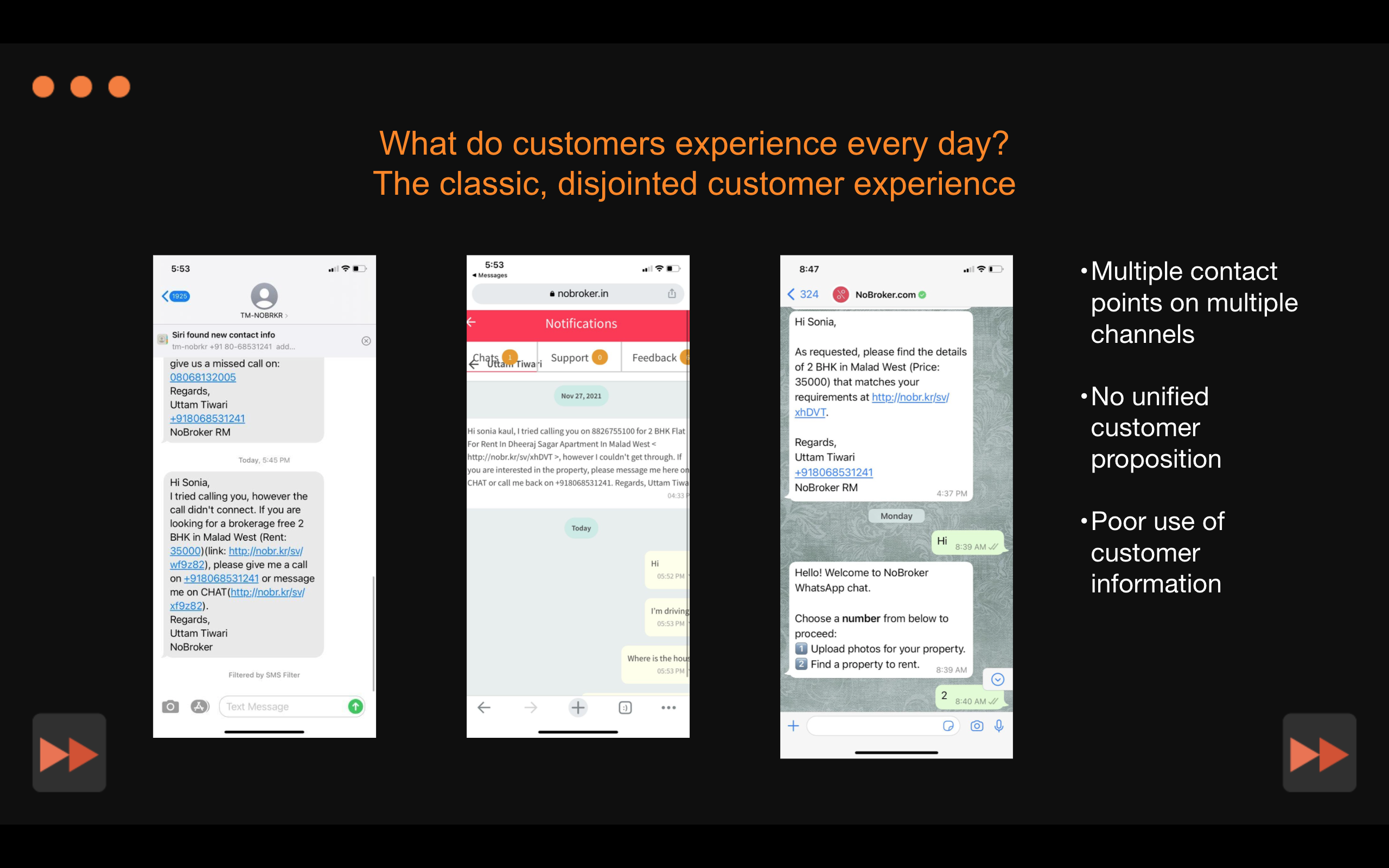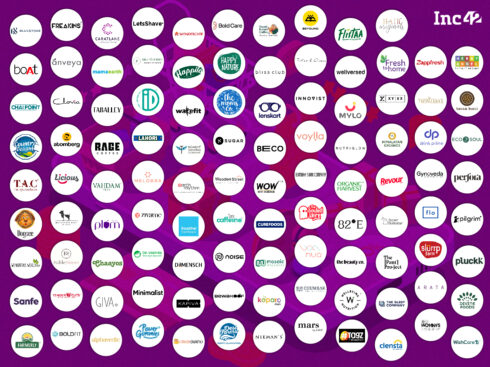SUMMARY
Although D2C brands recognise the power of good customer experience and the value of engagement, not many are able to master it
In her masterclass titled 10X Your D2C Brand With The Perfect Digital Customer Experience at Inc42’s second D2C Summit, Sonia Kaul, VP of product marketing and digital enablement at Karix, explained how brands could use this powerful tool to drive customer loyalty
Stressing the importance of seamless customer experience, Kaul said that 89% of people would switch to a rival brand after a poor experience
A major reason behind the rise of the direct-to-customer (D2C) segment is that brands are betting big on getting up close and personal with their customers as never before. This has become the Holy Grail of online retail in recent years, and innovative strategies are being worked upon to enhance engagement and improve customer experience. In an economy weakened by a raging pandemic, brands have no alternative but to determine ‘what’ the consumers want and ‘why’ without getting into costly and time-consuming hit-or-miss marketing.
The DIY route to building a seamless customer experience has worked well for some companies. But for the majority of the D2C brands, coping with the new market dynamics remains a formidable challenge.
“Recently, we were house-hunting for some friends and decided to register on a realty platform to get personalised assistance. To our surprise, what we received was disjointed communication. We hoped for a better customer experience in these digital times,” said Sonia Kaul, VP of product marketing and digital enablement at Mumbai-based Karix, a customer engagement platform.
Let us take a look at the snapshot of Kaul’s communication on the platform.

Going by what we see here, it is quite clear that many D2C brands struggle to develop an engaging and unified customer experience. The process is data-driven and requires bringing together a lot of components to derive actionable insights.
To decode the customer engagement puzzle and explain how companies can use this powerful tool to drive brand loyalty, Kaul conducted a masterclass at the second edition of The D2C Summit, hosted by Inc42 on December 3 and 4, 2021. She drew on her experience at Karix, which helped the audience understand what matters to customers and how it impacts brands.
Building ‘Good’ Customer Experience
Kicking off the session with her intriguing anecdote, Kaul detailed what would be required to build a good customer experience. In simple terms, customer experience is the cumulative outcome of all interactions a customer has with a brand, from discovery to website/app navigation to payments and post-purchase interaction. And it has to be seamless across all connection points.
But providing a unified, holistic experience is not easy. Here are three must-follow steps to ensure a lasting impression:
- Building a 360-degree customer profile: Brands need to know their customers first before developing a personalised communication strategy that can be leveraged to deliver a good customer experience. Therefore, companies need to capture all relevant data across channels (website, app, social media and more) to build comprehensive customer profiles.
- Unifying customer engagement: Brands must avoid irrelevant or repetitive communication as this tends to annoy consumers. Instead, a good engagement should be unbroken over time and across channels. For instance, if a customer leaves some items in the cart, the company can send a couple of reminders and probably a discount coupon as an incentive. But bombarding the person with the same message countless times and across multiple channels rarely helps.
- Personalisation is the key: Another critical metric of customer engagement is personalisation. Consumers are likely to respond when communications are tweaked for individuals as people now expect more personal and meaningful conversations. Brands can start by getting the basic information right (name and gender, for instance) and promoting products relevant to their age, interest and past browsing behaviour.
- Segmentation and targeting: Segmenting customers and prospects based on their journey in the conversion funnel is an excellent way to build relevant engagement. Brands should engage differently with them as they may come from different segments and nurture different perspectives.
Why Do D2C Brands Struggle?
One need not spell out how crucial it is to build an engaging customer experience. However, Kaul also mentioned some industry numbers that she came across during her research at Karix to underline the value it provides. According to her, companies that focus on customer experience may witness up to 80% revenue growth, while 89% of people will switch to a rival brand after a poor experience. That is why most brands have some processes in place to engage with customers and enhance their journey.
Kaul said that every brand has a similar vision when it comes to shaping the customer experience. But fulfilling that vision requires a step-by-step procedure in the proper order.
The first step is to collect customer data and build profiles based on the same. Next, these profiles are categorised into different segments, and an automated engagement system is put in place to cater to each segment. Then comes the feedback part, generated during automated customer engagement. This data is analysed and used to fine-tune customer profiles further to build micro-segments for better targeting of customers. Finally, personalised communication systems are developed by placing all customers in the most suitable micro-segments.
According to Kaul, personalisation is adapted for both marketing communication and A/B or split testing to speed up conversions across micro-segments.
Despite the focus on automation, manual interventions are also required at times. For instance, in a company without high automation proficiency, there are various touchpoints where ‘execute’ commands are manually given instead of AI/ML-powered processes. Moreover, disconnected data coming from different sources and a lack of in-depth data analysis may also hinder a smooth process.
“Even in today’s digital times, most brands are like the six blind men trying to figure out what an elephant looks like. Someone touches the trunk, another touches the tail, and everyone comes up with his interpretation of the elephant,” said Kaul.
While working with brands, she noticed that different functions — marketing, CRM, acquisition or loyalty — interpreted customer data differently, leading to many parallel communications and thus confusing customers.
For example, if a customer makes a one-time purchase, acquisition and loyalty functions may interpret it differently. The acquisition team may engage with the customer for upselling or cross-selling. In contrast, the loyalty team may offer discounts on similar products or push him for membership. In the absence of coordination between the teams, the customer will receive a multitude of communications, and there may not be any positive business outcome from the entire exercise.
Is There A ‘Right’ Way To Engage With Customers?
Although there are no hard and fast rules to ensure the best possible customer experience, certain principles and guidelines can help D2C brands, said Kaul.
The foundation of a robust system depends on the tech stack adopted by the company. There are two critical components here. One is the backend, where customer data is processed and stored to create profiles and segments. Companies proficient in handling a large volume of data can do this in-house. If it does not have a data analytics team, it can take the help of a cloud-native model where a third-party cloud service manages and processes the data for the company.
Next comes the front end, where strategies are implemented based on the data. Once again, a brand adept in customer engagement can manage this in-house. Otherwise, it can opt for third-party API services to build customer engagement solutions.
Understandably, the back-end must be well integrated to serve the front-end requirements to build a fluid system. And this is where two more critical components come into play — innovation and implementation of communication strategy.
Innovation is all about building custom solutions to engage and communicate with consumers. One can opt for multi-channel engagement, powered by dynamic product messaging, A/B testing, chatbots, co-browsing, live and video chats, surveys and more. Plenty of tools are available now, but a genuinely customer-centric brand should choose them wisely before creating an effective customer engagement strategy around them.
The final component is strategy implementation. Here, a brand must focus on the right messaging and right content to be sent to each customer’s most favoured communication channel. In other words, the tech part of the project creates the skeleton, while the engagement strategy and its implementation flesh it out. However, the engagement strategy will vary based on the nature of the product and the brand’s business requirements. Some companies value informative engagement, but quirky or fun-filled communications may work equally well for others. The right strategy must be determined based on the data derived from one’s target audience.
Kaul ended her masterclass by citing how Warby Parker, a New York-based online retailer of prescription glasses and sunglasses, bet on innovation to gain an extra edge.
The brand noticed that many of its customers used Twitter to complain about wrong prescription glasses. and instances where the company could not confirm an order because customers gave the company outdated prescriptions. (In the US, prescriptions come with a 6-12 month validity period, post which they are deemed unserviceable.) However, the company was unable to respond and help its customers on Twitter due to the microblogging site’s 140-character limit at the time.
So, the brand came out with FAQ-style videos and uploaded those on its YouTube channel. Every time a customer complained, the company shared the relevant links.
This also highlights the importance of creating a feedback loop where brands can capture customer voice at every touchpoint, said Kaul. Feedback is the single most powerful tool for companies to build a good customer experience.
“Even brands that do not understand customer experience processes can build a great connection with them because customers will always tell you what they want,” she concluded.



























